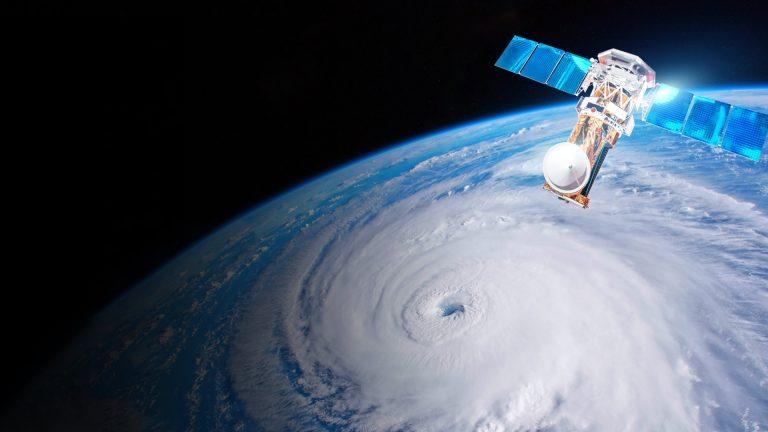Every year, hurricanes batter the North Atlantic and affect millions of people. The damage can be catastrophic, and these storms are getting worse. But what if we had a way to stop these ferocious storms?
What creates a hurricane? What is a Salter Sink? Why could thousands of wind turbines save lives?
Hurricanes can only form when the ocean’s surface is warm. And every decade, the surface temperature of the seas have been increasing by 0.13°C (0.23 F). By the year 2100, the mean global ocean temperature could increase up to 4°C (7°F).
This means we’ll have more severe hurricanes with higher wind speeds, more precipitation, and more human casualties. Thankfully, scientists are looking at ways to stop these vicious storms using geoengineering, the large-scale manipulation of the Earth’s environment. But how could we do that?
To control hurricanes, we need to find a way to control ocean temperatures first. Hurricanes form when the water is at least 26.5°C (78°F) and there is a weather disturbance, like a thunderstorm.
As a thunderstorm moves across the ocean, it sucks in the warm surface air. As the warm air rises, colder air rushes in to fill the space. This is what causes the ferocious winds of a hurricane.
The air movement turns into a cycle, as the ocean heats up the cooler air. The storm will continue as long as the ocean is warm, and water can evaporate from the surface. To stop this cycle, we’d need to lower the surface temperature of the ocean. So we’re going to look at three different technologies to control hurricanes.
First, we have the aerosol idea. Basically, we’d spray aerosols into the sky. These aerosols would reflect some of the Sun’s radiation back into outer space.
The ocean would absorb less radiation, and begin to cool. Doesn’t sound very complicated. And advanced computer simulations showed that spraying aerosols above the Northern Hemisphere would tame hurricanes in the Atlantic Ocean. Sounds great, what are we waiting for?
Well, it turns out that spraying aerosols above the Southern Hemisphere made hurricanes more severe in the North Atlantic. The altered weather also increased the drought in Africa’s Sahel region.
OK. Maybe using aerosols isn’t such a cool idea. Let’s move on to the Salter Sink. These are wave-powered pumps that would cool the surface water of an ocean by mixing warm and cool water. Imagine thousands of big rings bobbing up and down in the Atlantic Ocean.
Waves would push the warmer surface water into the top of the cylinder, then pump it down a funnel-like tube into to the colder water about 100 m (328 ft) below.
The Salter Sinks would be located in Hurricane Alley, where the worst storms usually develop. We’d need to use 150 to 450 of them to weaken hurricanes.
The third idea is to use a fleet of unmanned ships to spray ocean water into the air. These tiny salt water droplets would form bright clouds over the ocean. How would that cool the ocean’s surface?
Instead of sunlight hitting the ocean and being absorbed, the sunlight would hit bright clouds and be reflected back into space.
All of these ideas would take maintenance and monitoring. And they’re not all guaranteed to work as planned.
Geoengineering weather systems is challenging. and it could have dangerous side effects. But if geoengineering is too risky, are there other ways to weaken hurricanes?
Instead of controlling hurricanes, why not use their strength to help us? We could build offshore wind farms along coastlines. The turbines’ spinning blades would act like a buffer and make the hurricanes dissipate faster. And that’s a big deal.
Using a computer simulation, one study found that if there had been a wind farm in front of New Orleans during Hurricane Katrina, the peak wind speed could have been reduced by 145 km/h (90 mph). And the storm surge could have been reduced by almost 80%. That would have saved a lot of homes and lives.
But we’d need about 78,000 wind farms to curb the impact of a Katrina-sized storm. So maybe we should focus on other ways to reduce the ocean’s temperature.
Sources
- “How Do Hurricanes Form? | NASA Space Place – NASA Science For Kids”. 2021. spaceplace.nasa.gov.
- “Impacts of hemispheric solar geoengineering on tropical cyclone frequency”.Jones, Anthony C., James M. Haywood, Nick Dunstone, Kerry Emanuel, Matthew K. Hawcroft, Kevin I. Hodges, and Andy Jones. 2017. Nature Communications 8 (1). doi:10.1038/s41467-017-01606-0.
- “Geoengineering The Climate Could Cause Devastating African Droughts”. 2021. Seeker.
- “How to stop a hurricane”. McGuire, Bill. 2018. BBC Science Focus Magazine.
- “Taming Hurricanes With Arrays Of Offshore Wind Turbines”. Jacobson, Mark Z., Cristina L. Archer, and Willett Kempton. 2014. Nature Climate Change 4 (3): 195-200. doi:10.1038/nclimate2120.
- “Offshore wind farms could tame hurricanes before they reach land, Stanford-led study says”. Bjorn. Carey. 2021. Stanford University.
- “World’S Most Powerful Offshore Wind Platform: Haliade-X | GE Renewable Energy”. 2021. ge.com.















